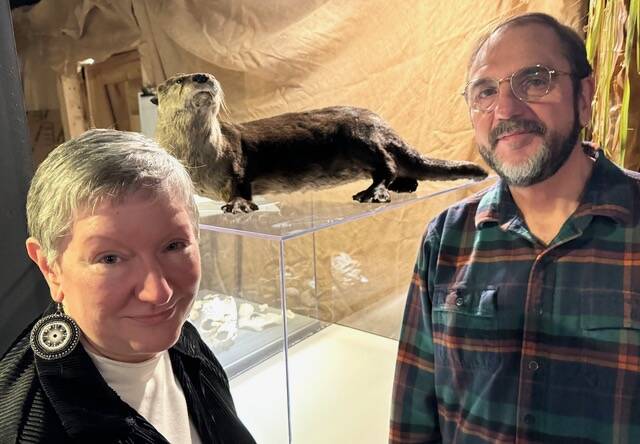The Island County Historical Museum in Coupeville has hundreds of items on display, everything from the bones of a woolly mammoth that roamed Whidbey 12,000 years ago before the Ice Age glaciers appeared to tons of things from the white settlers who came in the mid-19th century. Nine years ago, it added a splendid exhibit called Native Peoples/Native Places about the indigenous people who were here first, for thousands of years. It includes three rare dug-out canoes, woven baskets and a variety of stone and wood tools.
Next month, the museum will unveil a new exhibit, in a room on the ground floor next to the indigenous peoples exhibit. It’s to be called Native Species, and it will feature plants and wildlife that have lived here longer than humans. It will have a preserved otter, several birds, a baby deer, all kinds of shellfish and native plants, including camas bulbs that grew on the island’s prairies and were a major source of food for native peoples.
When I heard about this new exhibit in preparation, I went to visit with Dalva Church, the museum’s executive director, and Rick Castellano, the executive director-emeritus who is organizing the Native Species exhibit. The exhibit will basically explore species associated with the shoreline, the prairies and the forests. But how do they decide which species to include?
“We’ve had a lot of interaction with the local tribes who helped us when we opened the Native Peoples exhibit,” Rick said. “They have extensive knowledge about the species that have been here the longest.”
Rick also gathered information from the Pacific Rim Institute in Coupeville and the Whidbey Camano Land Trust, both of which had done extensive work to restore native plants that have been crowded out by human activity on Whidbey. No invasive species will be anywhere near the new museum exhibit. “Not a blackberry vine or a Canadian thistle in sight,” Rick said.
“Basically, this new exhibit will feature what the indigenous peoples had to eat on Whidbey,” Rick said. “Tribes on Whidbey Island were considered to be rich because of their unending supply of food.” They ate deer for protein, they made a form of bread dough from flour made from camas bulbs and they had lots of clams, mussels and oysters.
They also had king salmon, a giant species that might reach four feet long and weigh more than 30 pounds. And that brought up something Rick hopes somebody might have. “I really would like to hang a preserved king salmon on a wall in the exhibit. I have the perfect spot for it,” he said. If you have such a beautiful preserved salmon, Rick asks you to contact him at the museum.
The new exhibit has also had great help from two well-trained professionals. The otter, baby deer and some birds were preserved by Matt Klope, owner of Whidbey Taxidermy in Oak Harbor and a retired federal wildlife biologist. All had either died naturally or, in the case of the baby deer, killed by a car on the highway. They look almost alive in the new exhibit.
“We are hoping that someone will make a donation to adopt each animal in this new exhibit,” Dalva said.
The exhibit also features giant photos on three walls showing the shoreline, the prairie and the forest. They were taken by Coupeville photographer Rich Yukobowsky.
The formal opening of the exhibit will take place on Saturday April 20. Coupeville Mayor Molly Hughes will officially cut the ribbon at a ceremony planned for 3:15 p.m. Dalva thinks visitors will be impressed.
“We hope visitors will come away with a better understanding of the flora and fauna that are native to this island, and the relationship that native peoples had with them and the land,” she said. “We also plan to tie this exhibit into what we call regenerative tourism. We hope the exhibit will spur them to volunteer for the Land Trust or Pacific Rim Institute, which are doing restorative projects.”
Dalva added, “This is a beautiful place and we want to show how you can help keep it a beautiful place.”
Harry Anderson is a retired journalist who worked for the Los Angeles Times and now lives on Central Whidbey.



